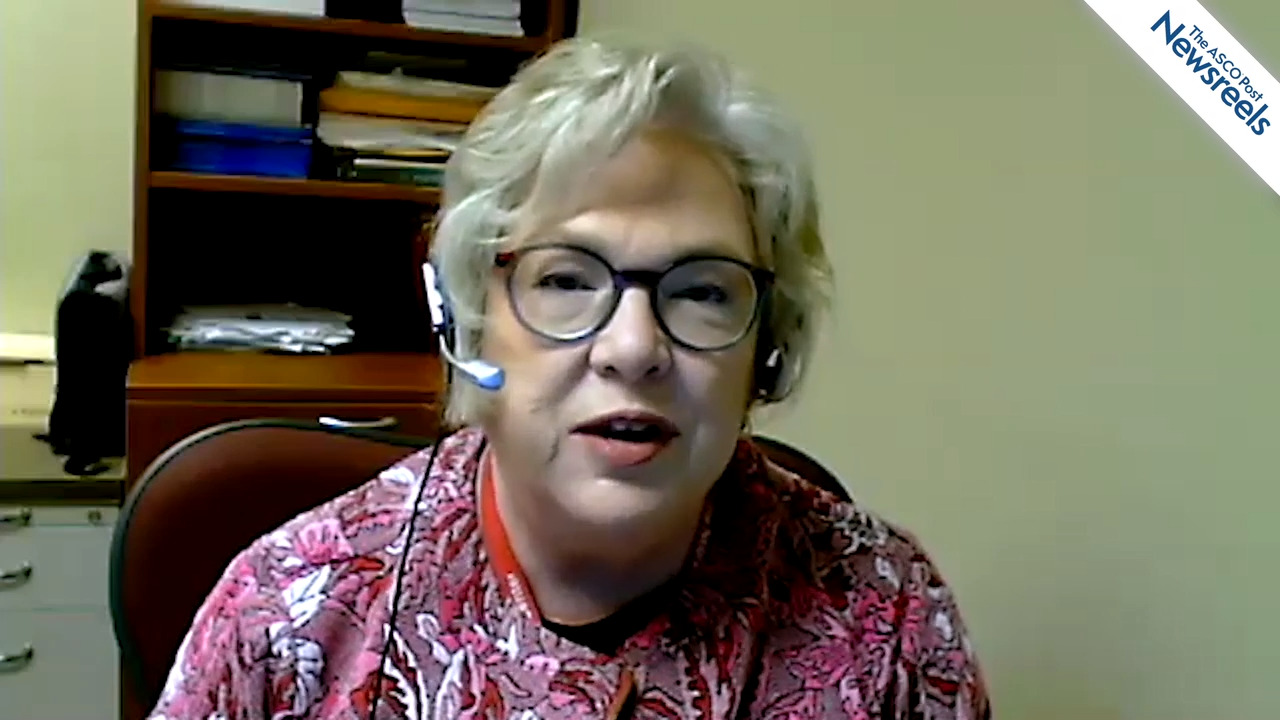Sara A. Hurvitz, MD, on Talazoparib vs Chemotherapy for Breast Cancer: Results From the EMBRACA Trial
NCCN 2020 Virtual Annual Conference
Sara A. Hurvitz, MD, of the University of California, Los Angeles, discusses racial differences in self-reported outcomes of patients with HER2-negative, locally advanced or metastatic breast cancer and a germline BRCA1/2 mutation who received talazoparib vs physician’s choice of chemotherapy (Abstract CLO20-039).
The ASCO Post Staff
Pam Baker DeGuzman, PhD, of the University of Virginia School of Nursing, discusses her study findings on the use of the NCCN Distress Thermometer, which identified and addressed distress in patients treated for head and neck cancer who were then referred to speech pathologists, lymphedema specialists, and social workers (Abstract HSR20-082).
The ASCO Post Staff
Karen Wonders, PhD, of Wright State University, discusses the safety and efficacy of exercise during cancer treatment in minimizing toxicities and addressing the short- and long-term effects of cancer therapy. Dr. Wonders suggests that exercise becomes a standard of care for patients with cancer (Abstract HSR20-110).
The ASCO Post Staff
Hope S. Rugo, MD, of the University of California, San Francisco, discusses an integrated analysis of five clinical trials, in phases I through III, for a variety of advanced cancers. Findings show that patients treated with talazoparib monotherapy had lower hospitalization rates (compared to those receiving chemotherapy) and used less supportive care medication (Abstract CLO20-052).
The ASCO Post Staff
Elizabeth Reed, MD, of the University of Nebraska Medical Center Fred & Pamela Buffett Cancer Center, talks about how she and her team sought to help rural oncology providers recognize and address the physical, psychosocial, and decision-making needs of young women with breast cancer by implementing clinical pathways and treatment guidelines (Abstract BPI20-014).
The ASCO Post Staff
Barbara DeVivo, PhD, MBA, of Westmont College, talks about how the culture and structure of tumor boards—and their invisible status hierarchies—may hamper collaboration and influence the way providers treat patients with cancer (Abstract BPI20-020).





